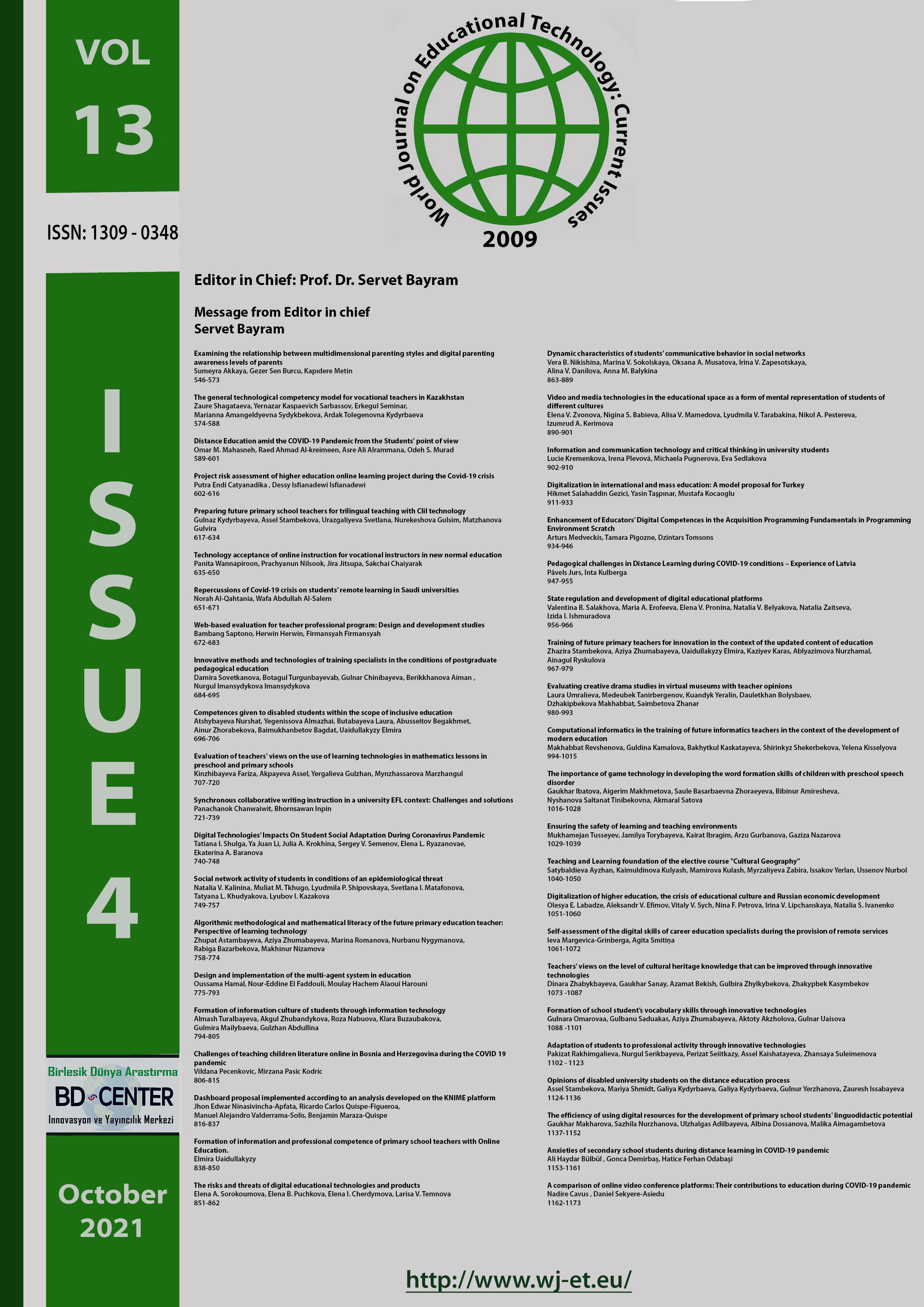Anxieties of secondary school students during distance learning in COVID-19 pandemic
Main Article Content
Abstract
As a result of increasing COVID-19 cases all over the world, schools continued to provide education distantly since the beginning of 2020. This immediate shift is considered as both a factor of anxiety and an area of anxiety. This study aims to investigate the underlying reasons of anxieties among secondary school students with regard to five dimensions: health-related issues, technological opportunities, domiciliary conditions, course-related issues and privacy-related issues. A survey design was adopted. The research was carried out with participation of 156 secondary school students of a state school in Istanbul. Data was collected through the Anxiety Sources Questionnaire in Distance Education developed by the researchers. The underlying reasons of anxiety of secondary school students is presented under five categories. The results revealed that students were mainly concerned about face-to-face exams; problems related to devices; isolation; their inefficiency to learn the content and sharing their private settings.
Keywords: Anxiety; COVID-19 pandemic; Distance education; Secondary school students.
Downloads
Article Details

This work is licensed under a Creative Commons Attribution 4.0 International License.
World Journal on Educational Technology: Current Issues is an Open Access Journal. The copyright holder is the author/s. Licensee Birlesik Dunya Yenilik Arastirma ve Yayincilik Merkezi, North Nicosia, Cyprus. All articles can be downloaded free of charge. Articles published in the Journal are Open-Access articles distributed under CC-BY license [Attribution 4.0 International (CC BY 4.0)].
Birlesik Dunya Yenilik Arastirma ve Yayincilik Merkezi (BD-Center)is a gold open-access publisher. At the point of publication, all articles from our portfolio of journals are immediately and permanently accessible online free of charge. BD-Center articles are published under the CC-BY license [Attribution 4.0 International (CC BY 4.0)], which permits unrestricted use, distribution, and reproduction in any medium, provided the original authors and the source are credited.
